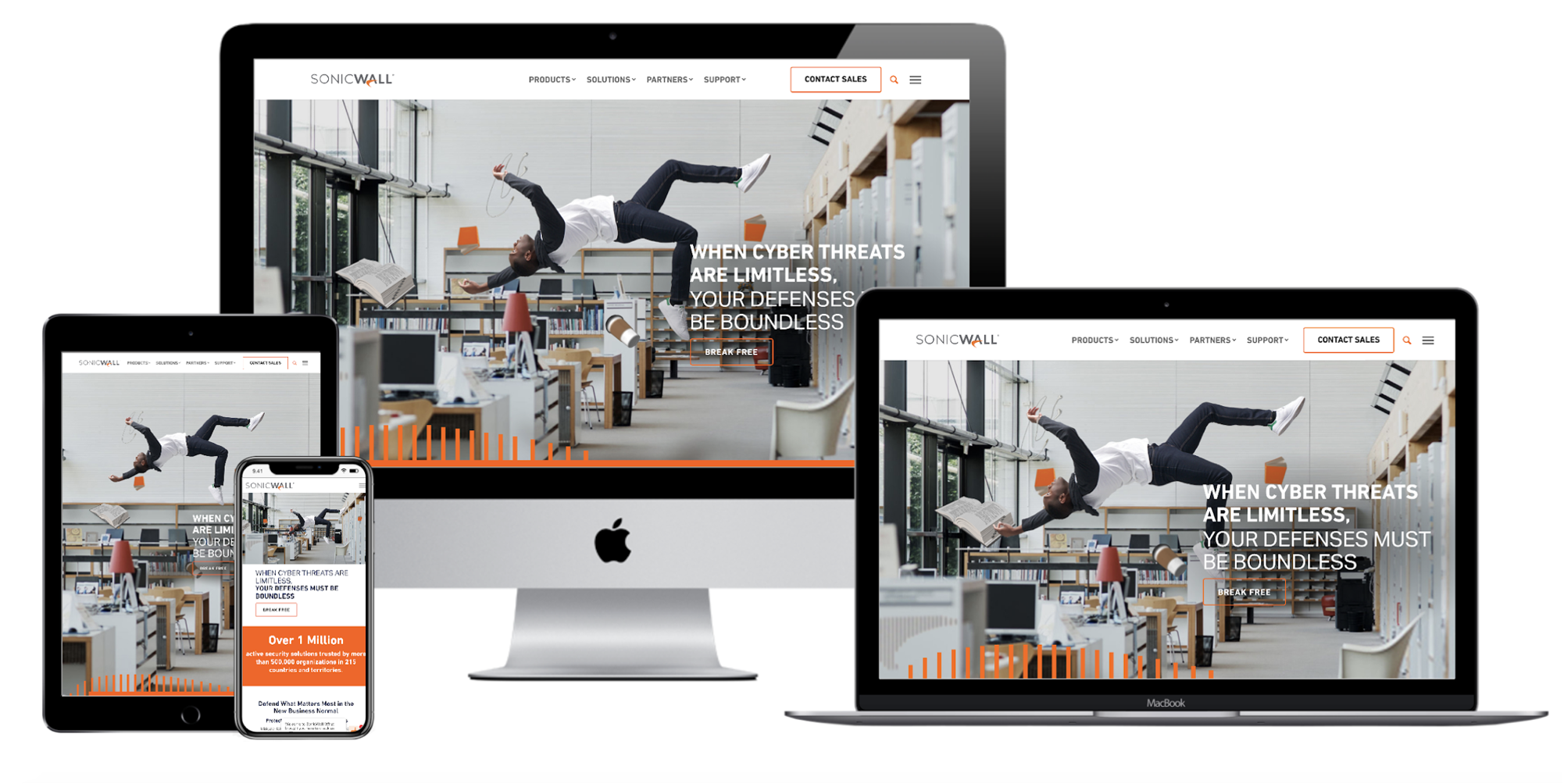17 hours—that’s how long the average person spends looking at a screen each day. With remote learning and work-from-home, screens take up our attention and are expected to remain an integral part of society long past the pandemic. That’s why getting a jump-start on digital curated content marketing is more important than ever. What is content marketing? In simplest terms, it is consciously selecting valuable content to be shared with your targeted audience. In order for content marketing to be successful, it must be relevant and up to date. It takes time and effort to keep up with changing trends within the marketing mix, which is why Bluetext has provided 3 ways to make the most of your content marketing efforts below. Quality content marketing can keep your business ahead of the competition, at a lower cost compared to other marketing strategies.
3 Must-Have Strategies to Capitalize on Your Content Marketing:
1. Virtual Engagement
As the pandemic shifted business online, working Americans realized they could have just as productive a meeting from their homes as in the office. It proved that even if that meeting could not have “just been an email”, it could be virtual. Turns out, there’s really no need for employees to sit in hours or traffic or fly across the country in order to get things done. Social norms pivoted quickly, as it became standard practice for not only meetings to be conducted virtually, but also events. Webinars, Zoom happy hours, and virtual conferences became the norm as companies shifted operations to accommodate a virtual world. While there are some pros to an online environment, there are also undeniable cons. We stare at screens for hours on end, making it difficult to stay focused and engaged. By the fourth zoom login of the day, we get bored and lose interest. In order to improve the digital experience, businesses should be conscious of content quality and delivery methods. Due to the pandemic and the shift to virtual, the bar for content marketing has been raised. Every piece of content marketing should be curated to not only promote your brand but also spark engagement. Breakout sessions, polls, live-chat, animations, and other interactive elements are great ways to maintain engagement with your participants.
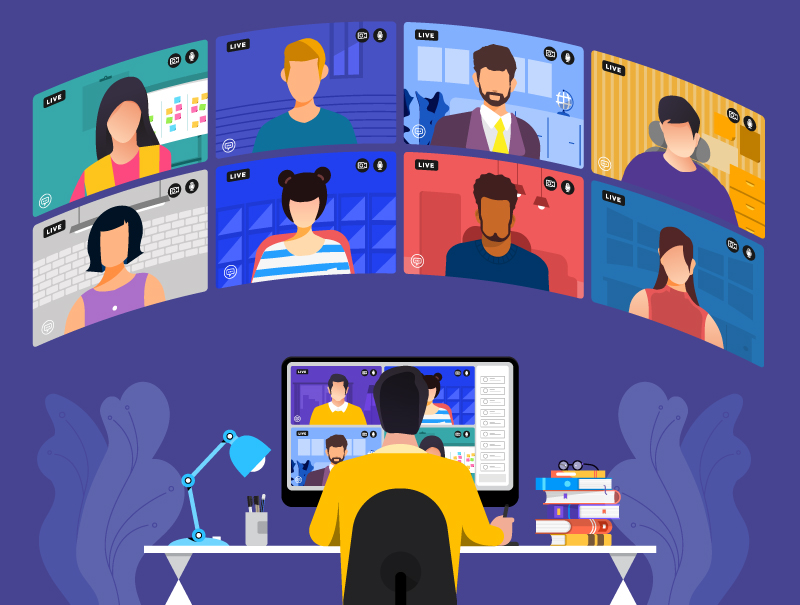
2. Influencers/Brand Ambassadors
While people were isolated in their homes, they used Social Media to stay connected during the pandemic. Platforms like Tik-Tok, YouTube, and Instagram experienced an increase in usage, creating the perfect avenue for digital marketers. Social Media Influencer marketing increased worldwide, as consumers related more to their favorite blogger on their personalized Instagram feed rather than the A-list celebrity featured on TV. Content produced by influencers helps to fill in the gaps of content coverage by creatively reaching the target audience in a more natural way. This trend extends far beyond the promotion of consumer products, as B2B industries have recognized the power of influencer marketing across a number of social platforms. Within the B2B marketing landscape, employees can serve as influencers or “ambassadors” for your business’s brand. Your employees are typically connected to more people on social media than your brand. While taking advantage of strong ties, employees are able to communicate messages to a target segment with strong content marketing.

3. Search Engine Optimization
When you view Google search results, how far do you scroll down the page? Not very far. Users typically do not make it past the first few search results, which is why it is critical for your business to dominate SERPs (Search Engine Result Pages). Businesses need to invest in SEO if they want to optimize their revenue goals. SEO is an ever-moving target, as digital marketers must leverage analytics, employ automation, and keep up with Google’s latest algorithm updates. Frequent publication of content marketing rich with keywords is one of the top recommended strategies to stay on top of SERP results. Not only is the optimization of your keyword strategy important, but also the digital web experience attached to your site. Given that users’ attention spans are short, your business’ website must be engaging and easily navigable. Since we are always on the go, marketers should also capitalize on mobile SEO abilities. On average, people are on their phones for at least 6 hours each day, therefore an easy-to-use mobile platform is crucial to reach audiences. Plus, enhanced mobile speed & experience is new criteria strongly weighted by Google Web Vitals. Overall, prioritizing the user’s website and search experience will yield better results.
As you have learned, curated content marketing is critical to take your business to the next level. Contact Bluetext if you’re interested in revamping your B2B content marketing strategy.
20 times a day — that’s how often people on average check their email. Sounds like a lot, but in reality emailing has become so ingrained in our everyday routines. Whether email is the first thing you check when you wake up, in line at the coffee shop, or multiple times during the workday it is a key aspect of our personal and professional lives. Hence, the importance of email marketing. Seems like a no-brainer–sales and marketing outreach is a natural fit for email inboxes. So why are your email performance metrics dwindling?
The prevalence of emails is a double-edged sword. Yes, email is an undeniably popular form of communication. However, this means inboxes are being constantly flooded. On average people receive 121 emails a day. This heightens the challenge of effective email marketing but does not dilute the significance of email marketing. It’s the most popular channel for business communications and the reliable channel for nurturing and converting leads to sales throughout the funnel. Many It is a tricky, but highly rewarding digital marketing platform. The nuances of email marketing and widespread frustration with stagnant performance metrics have led Bluetext to identify the 5 most common email marketing mistakes and how to improve your email performance metrics.
1. Subject Line Skepticism
One of the most challenging aspects of email marketing is the subject line — this is the hook that entices a user to either open your message, or ignore it entirely. When your inbox is being constantly flooded with marketing emails it can become second nature to simply ignore or mark a promotional email as spam. However, a strong and attention-grabbing subject line can dissuade a user from these practices and pay attention to your messages. Below are some of the most common subject line faux pas:
- Too wordy – your subject lines need to be short, sweet, and pack a punch. Think about all the words on your average inbox interface, there’s a lot! In a 5 second scan, your subject line should jump out with concentrated keywords. The highest open rates occur with subject lines 6-10 words in length. This keeps the full message readable in the line item without truncating with those dreaded … A subject line doesn’t need to contain entire sentences, or detail every piece of content inside. Instead, try a catchy phrase or question to spark curiosity, which instantly drives engagement.
- SPAM Red Flags – subject lines written in all caps immediately sound the alert for SPAM filters – both by the reader and email system!
- Pre-Header Connection – subject line and pre-header text are two key elements of any email that when used effectively form a dynamic duo. Both are prime opportunities to capture attention and prompt an open, thus need to complement one another. Strive for subject lines that briefly describe what the message is about, and a pre-header provides important context. Together they form a cohesive narrative that gives a sneak peek, driving the reader’s engagement.
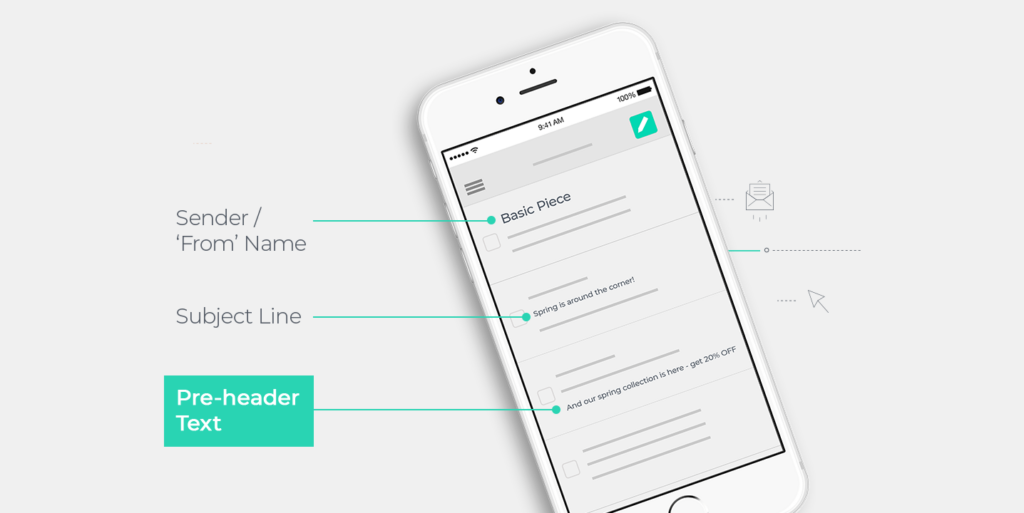
2. Forgetting the Filters:
Keep in mind the success of your email marketing campaign hinges on two parties: the recipient and their email provider’s SPAM filters. More often than not marketers concentrate on the human reader and forego considerations of the automated filter system. To avoid getting trafficked to SPAM folders, watch out for the use of these warning signals: clickbait phrases, all caps, overuse of “you” and “I” pronouns, and listicles. Email providers most commonly scan content on the following levels:
- Header filters – look for spam indicators in email subject lines and pre-headers (for example clickbait phrases, all caps)
- Content filters – crawl the content of the email to find spam indicators
- General backlist filters – use the database of spammers to determine if the email is clickbait
- Permission filters – ask the reader for confirmation before opening the email
3. Over Genercism:
Personalization is key and leads to 25% higher open rates. In any aspect of digital marketing, it’s important to recognize basic human psychology: people want to feel special. Whether that’s by seeing their pain points addressed, persona-based navigation, or even as basic as being addressed by name. Personalizing emails with first and last names is a simple, but effective way to grab the reader’s attention and qualm the suspicion of copy-and-paste clickbait. Additionally, the overuse of first-person pronouns is a trigger for SPAM filters. Consider adding their name to a subject line (ex. John, your system needs updates” or at the least beginning the body copy with a personalized greeting “Hi John Doe,”. With this approach, your email immediately feels like a one-to-one conversation and less of a robotic one-to-many outreach.
4. Unclear Call-to-Action:
Let’s backtrack: the goal of your email is to guide your subscribers from opening an email to going to a landing page where they can learn more information about a promotion, request a demo, or contact you. Your email marketing strategy is aimed at turning leads into prospects, and eventually customers. Getting users to open your email is half the battle, the other half is guiding them to conversion. Don’t make a reader dig through email content to find the end goal. Add a CTA or landing page link to the beginning and end of an email body, in the event that the user does not read the entire message. A CTA stands for “calls to action” for a reason — they should be action-orientated and exciting! Experiment with different language that goes beyond the boring “Learn More” to inspire clicks. Perhaps try a stylized button to really catch the eye. The most important aspect is to be cautious of burying your CTA, if it can’t be found in a 5-10 second scan chances are your reader will give up and forgo the opportunity.

5. Ignoring the Technicalities:
Before getting into all the bells and whistles of your content strategy, set yourself up for success with a strong foundation. Deliverability of your emails is crucial to getting your foot in the door with your messages. About 10% of emails never even reach inboxes due to bounces, SPAM filters, or other technical issues. Most email service providers (ex. Marketo, Pardot, HubSpot) systems have built-in functions to assist with technical evaluation of domain authority, IP reputation, and email testing before you hit send. On a regular basis, you should be checking the health of your email systems, removing inactive subscribers, and analyzing important deliverability & bounce metrics.
As you can see there’s a lot to consider within your email marketing strategy. It’s a tricky path to navigate, but when done right, is a powerful digital marketing tool.
Need to uplevel your email marketing strategy? Contact Bluetext to learn more about our services.
With a constantly increasing amount of online content being published each day, it is important to stand out in the search engines results. Social media does not directly contribute to your SEO ranking, however, it does have the potential to drive quality web traffic to your site. When links to blog posts, videos, podcasts, and more are shared, Google and other search engines use it to rank your website. The right strategy will allow you to increase overall brand awareness, improve traffic, amplify your audience, and overall benefit your SEO. Want to know how? Read further to learn more about four practical social media tips that will explain how these marketing channels will help you improve your site’s ranking.
1. Generate New Ideas
Whether it is for blog posts or Instagram captions, social media can help you generate new ideas. One way a social media post can generate content ideas is through user feedback. Oftentimes, followers post questions or topics they would like to hear more about in the comments section. Questions within your comment section can also provide great feedback regarding your content that may not be readily available on your social page or website. Using this process, you can use feedback from your followers to generate a list of ideas that will boost your site traffic.

2. Post Content Frequently
Search engines want to know if your company’s website is relevant for its users. Therefore, it is important to regularly post SEO-saturated content to ensure your business looks helpful to users and trustworthy. The more content you post on your website, the more social posts you can create to promote and boost that content. You can accomplish this by creating a social media schedule for each month to monitor the frequency of your posts as well as important analytics like traffic, engagement, etc.
3. Know Your Audience
One of the many benefits of social media is getting to know your audience segments. Social media insights and tools like Google Analytics can tell you where your audience interacts with your content most. This is helpful for improving your SEO ranking because it makes finding the right keywords to use throughout your website a much easier process, boosting your company brand recognition and improving your search engine optimization and page rank.

4. Use Keywords
It can’t be stated enough: using the right keywords is crucial. Start by making a list of crucial keywords for each page on your website and commit to using those keywords throughout the copy of those pages. It is important to keep in mind what your audience might be searching for to arrive at this post. Tools such as Semrush Keyword Research and Similar Web can be helpful resources for picking the right keywords.
The benefits of improving your SEO results are you can increase brand exposure, improve traffic, and amplify your audience. Therefore, it is an important part of your social media strategy. Contact Bluetext to learn more and about how we can boost your SEO results.
After crafting the perfect campaign, ad creative, and hook-worthy copy, there is nothing more frustrating than a user coming to your website only to leave after a few seconds.
In order to prevent those high bounce rates and low clickthrough rates, you need to set up engaging and informative landing pages that lead visitors to the actions you want them to take on your website. It’s not an easy task, but thankfully digital marketing agencies, such as Bluetext, have experience and tips to share. Let’s look at five ways you can master the art of the landing page.
1. Emphasize Calls to Action
As this Elementor article states, “Unlike most webpages, landing pages often actively discourage exploration in an attempt to push visitors toward the CTA.” The whole goal of your landing page will be to push your users to a certain action or link, so make sure you place CTAs throughout your landing page to encourage clicks as the user scrolls. Also, be certain the CTAs are the most prominent component of your landing page, by color, placement, or other characteristics, they need to stick out to grab visitors’ attention and entice click-throughs. Also consider adding sticky CTA menus that follow the user down the page, enticing them to click-through at any time during their experience with your site. Some top placements of sticky CTAs lock onto the right-hand side or directly under the main menu navigation.

2. Think Through Your First Viewport
When a user first appears on your landing page, they are looking for an immediate answer to their question. Every one of us has looked at a website for all of one second before exiting because we could not immediately find the information we wanted or perhaps there was too much text to read through.
Make sure that you use that first viewport wisely to start appealing to user needs. Have informative, relevant headlines, eye-catching images or video, and helpful secondary text. All of these pieces will go a long way in convincing your users to continue to scroll, and eventually click that CTA button.
3. Write Intriguing Copy
If you can grab your visitor with their first look at your landing page, you’ve already overcome a significant challenge of landing pages. However, now you need to sustain that attention. It’s a tricky maneuver, balancing providing immediate information while also ensuring they absorb additional details. Give everything away at once and the user never interacts further with your website, but tease it out too long and you risk users bouncing off the page. Digital marketers recommend to not overwhelm the user with small, dense text but instead offer answers to their questions. Additionally, psychological elements can be used to reach your visitors and convince them to use your CTAs. By the time someone finishes reading your landing page, they should have a clear idea of why your product or service will give them the best solution to their problem.
4. Optimize for Search Engines
You may have the most magnificent landing page in the world, but that does nothing if people can’t find it. Using keyword phrases and writing rich meta descriptions is an important part of SEO for a successful landing page. By getting to the top 20 results of Google (or in the first two pages of results), the chances of someone actually seeing and clicking on your landing page rise substantially.

5. Design with Your Users in Mind
As with any page, design can make or break your user experience. As you write copy, consider what information is most important to the user and needs to be emphasized in valuable H1’s and H2’s, think about which details could be shown in more interactive formats, and choose media that adds to instead of distracts from your main purpose. You also need to ensure that your landing pages are fully accessible for all your potential users.
A great example of a compelling, successful landing page comes from our campaign with Varonis. Bluetext worked with Varonis to create ads that drove viewers to landing pages and CTAs. By targeting the right audiences and leveraging intriguing copy, Bluetext helped Varonis grow its click-through rates above the industry benchmarks.
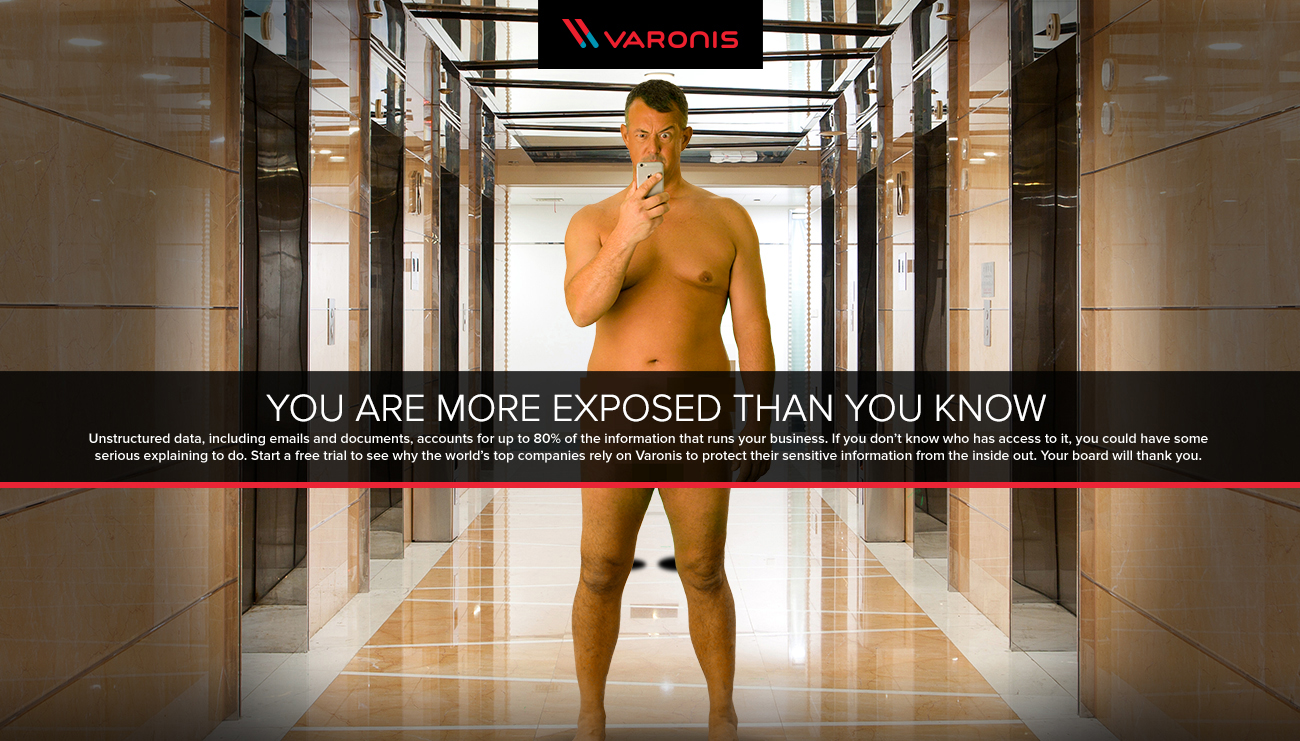
Want to learn more about creating successful landing pages or are interested in working with Bluetext to create a successful, data-driven landing page strategy? Contact us today.
Whether you’re creating your first logo, editing an existing logo, or totally redesigning an outdated logo for your business, you’ve been tasked with representing your brand and everything it stands for within a small graphic icon. A logo design project requires extensive knowledge of what your business stands for, what your current competitors are doing, and how design principles can be applied to capture attention and promote memorability. To increase the likelihood of a successful logo design, many companies turn to digital agencies like Bluetext who understand the competitive landscape and get to know each business in depth before designing a logo that accurately reflects the company and helps them stand out among the competition. The following 4 principles are integral considerations for the logo designing process at Bluetext, and they should be utilized by any company looking to create a timeless, impactful visual identity for their brand.
1. Color
More often than not, color lays the foundation of a brand. Color is the first thing that catches the eye, and in an age of diminishing attention and quick digital scans can make or break a strong brand. With the power to improve brand awareness by more than 75%, color psychology is an essential consideration. Digital marketing & branding agencies advise considering the perspectives of two important players: the end-user and the industry. Below are three critical questions to ponder before any branding objective:
- How do you want to be perceived by these audiences?
- What emotions should your brand evoke from end-users?
- How do I want to compare to industry standards? ‘Zig’ (run with the pack) or ‘zag’ (go against the grain)?
Certain colors tend to dominate different industries. Ever wonder why almost all fast food brand logos use the colors red and yellow? Red elicits passion and energy, while yellow stimulates hunger, which leads to subconscious food cravings. In comparison, the government contracting industry tends to use the colors red, white, and blue to invoke a sense of patriotism. Understanding the emotional impact behind your color choices can help your brand resonate with users and prospects. However, while some colors are tried and true, you should also weigh the costs and benefits of choosing the colors commonly found within your industry. Your ultimate goal should be to stand out amongst the competition, rather than blending into it. Whether or not color palette is the avenue to differentiate is a question that an expert brand agency would be able to consult on. While it may be tempting to utilize numerous color combinations, within your brand and logo, keep in mind the second most important quality of a logo: keeping it simple.
2. Simplicity
Visuals can communicate information 60 thousand times faster than text, a simple visual can be more impactful—and memorable—than a complicated or wordy design. Especially with the rise of mobile users and smaller screens, reducibility is a critical factor. Your logo should be comprehensible across multiple sizes—from a banner ad to a website favicon. Complex, detailed logos often have legibility challenges on small devices, therefore limiting your opportunities to show off even the most stunning designs. When there are too many competing elements of a logo, a viewer’s attention is divided between them, which detracts from their ability to recall the logo as a whole. It’s much more effective to choose just a few key elements of your logo to highlight your brand offerings. A good logo communicates your company’s strengths, whether it’s a rich history, creative thinking, or literal products featured in the design. The devil is in the details, which is why leading brand agencies advise a simple, yet scenic, route to logo success.
3. Adaptability
Another important aspect of your logo is that it must hold up to the test of time. A brand as a whole can be updated and refreshed every now and then, but replacing an outdated logo can be a large undertaking. A timeless logo is one that can be implemented across different formats, from horizontal, vertical, square, black and white, full color, etc. These format variations allow the same logo to be adapted to different contexts as the opportunity arises, whether that be print materials, branded merchandise, and new online formats. Anticipating new ways to use your logo will keep users engaged with your brand as you expand across different platforms. Your brand’s style guide is an important resource for explaining how your logo and brand identity can be communicated through different channels.
4. Relevance
The previous 3 qualities of your logo tie into one overarching factor: relevance. Before considering a logo redesign, you should talk extensively with target consumers to better understand how they perceive your current logo and overall brand. Creating a logo that reflects your brand identity is one thing—making sure that customers actually receive and understand your message and the brand behind your logo is an entirely different challenge. A digital marketing agency can be a powerful partner to compiling market research and getting a third-party perspective on your logo’s effectiveness. To learn more about how to stay in tune with your customers to make sure your branding conveys the value you actually offer, check out an interview with Bluetext’s Jason Siegel and Travelocity’s Terry Jones on avoiding brand regret.
Keeping up-to-date with design trends is one way of reading the market at a broad level to see which logo design techniques are resonating with audiences. However, accurately representing your brand is more important than being trendy. In the cyber-security space, for example, the challenge of selling an abstract concept has led many companies into the trap of using stereotypical imagery or design to try to communicate that they work with computers, coding, and hackers in hoodies. However, following those trends has led many companies to fall into the clutter of the category—a space where they’re practically indistinguishable from competitors. In order to avoid these common mistakes and stand out as strong competitors within your industry, consult a brand & marketing agency for your logo design.
Contact Bluetext to take the first step in setting your brand (& logo) up for long-term success.
Why animation?
As the saying goes, static doesn’t sell. According to research, animated banner ads are more than four times as effective as their static counterparts. More and more these days, users are expecting engaging, interactive content from brands at every point of contact. This goes for any platform—a website, an app, digital out-of-home, social platforms (yes, this means TikTok). Anything with a screen is an opportunity to shake up your brand with animation.
Say more with animated content
If a picture is worth a thousand words, an animation is worth a million. Animated content captures key messages in more ways than a static graphic, and injects any design with the personality of a brand. After all, motion draws out emotion. Whatever your brand wants to convey, animated content can sharpen and elevate that message.
Is your brand a subtle responsive animation kind of brand, or a claymation one? Maybe a blueprint-style animation speaks to your brand’s personality best, or perhaps a parallax effect is the best representation of your brand. However you choose to do it, you can get more out of your corporate visual identity with animation.

Getting started
When it comes to animation, the options are endless. Here are a few simple ways to get started, plus some examples produced by the team here at Bluetext.
1. Introduce an animated version of your logo or key brand assets.
An animated brand identity can be applied across any digital asset, as demonstrated by Octo’s identity in motion. The style of movement captures the ever-changing nature of the government technology market and communicates more about Octo than a static identity could.
2. Add subtle movement to some of the static content on your website.
This example from ScienceLogic is an elegant way to introduce movement to your website while incorporating visual elements like brand shapes and secondary colors. As the mouse hovers over images of the leadership team, the background pops with new colors and shapes to keep the viewer engaged with what they’re seeing.
3. Consider a moving graphic for your next ad placement.
4. Read some more tips on motion integration from Ale Hernandez, one of Bluetext’s web design and UX experts.
Easy animation with interactive AI
Animation is becoming so necessary for modern brands that designers have even begun to automate some of the process. This cutting-edge technology is making animation more cost-effective and efficient to produce, meaning that more and more brands will be able to build out animated identities. Now is the time to get an edge on your competition by debuting a signature animation style for your company’s offerings.
Want to go all-in on animation? Contact Bluetext to learn about our motion design and interactive UX services.
Financial service providers typically fall into one of two buckets: legacy brands and disruptors. Legacy brands are what you typically think when you think “bank;” large, established brands, often with physical locations, that provide a range of financial services. Disruptors, on the other hand, are innovative and digitally focused, pioneering new ways to simplify finance.
As the finance industry continues to be disrupted by new technologies and innovations, keep an eye out for these three digital-first trends on the rise.
A focus on financial literacy will improve consumer relationships with finance
Banking and finance are critical to our everyday lives, yet many individuals struggle with understanding basic financial terms and concepts. Many FinTech companies make it a priority to educate their consumers with content marketing on how to make healthy financial decisions and gain a more holistic understanding of their relationship with money.
Some leading FinTech startups are specifically targeting the younger generation, making it a goal to establish healthy financial habits early on around debt, budgeting, and investing for the future. Startups like FamZoo make learning finance basics fun, positioning parents as “banks” and children as “customers”. This metaphorical language encourages children to take out “loans” from their parents and earn allowances. Understanding how the loan process works from an early age removes the intimidation that can often accompany personal finances.
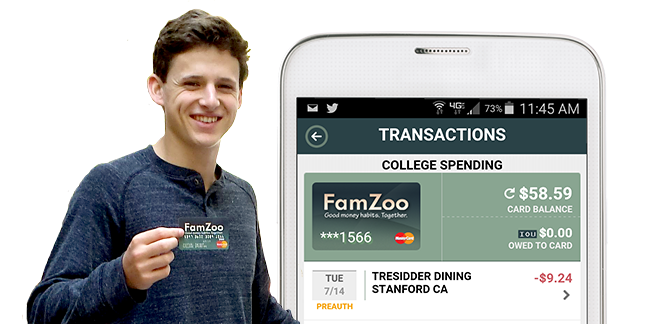
Promoting financial literacy in creative ways will continue to be a priority in the coming years as startups vie for a share of the digitally-focused finance consumer pool.
Microservices allow for agile and customizable solutions
The advent of microservices is one of the key reasons innovators have been able to disrupt legacy providers, releasing many of the constraints that have previously kept legacy institutions one step ahead. Microservices add a flavor of personalization, a proven marketing trend across multiple industries. Emerging technology enables FinTech companies and consumers alike with the ability to customize their solutions, adapt to real-time problems, and provide on-the-fly solutions.
Traditionally, legacy institutions have offered uniform solutions with many interdependencies, making it difficult to evolve and innovate without impacting the entire architecture. While large financial institutions can be innovative, it often takes much longer to introduce and establish new technologies.
Conversely, microservices serve as independent applications, allowing for the speedy development, testing, and deployment of updates. This model allows FinTech companies to work on many different solutions simultaneously, and, with fewer dependencies, quickly deploy service and product updates. The ‘a la carte’ concept is attractive to consumers, as they can select the specific services they want without relying on a full-service solution.
Check out how Bluetext client Paya is serving end-to-end, seamless, and innovative payment solutions specifically suited to their customers’ needs.
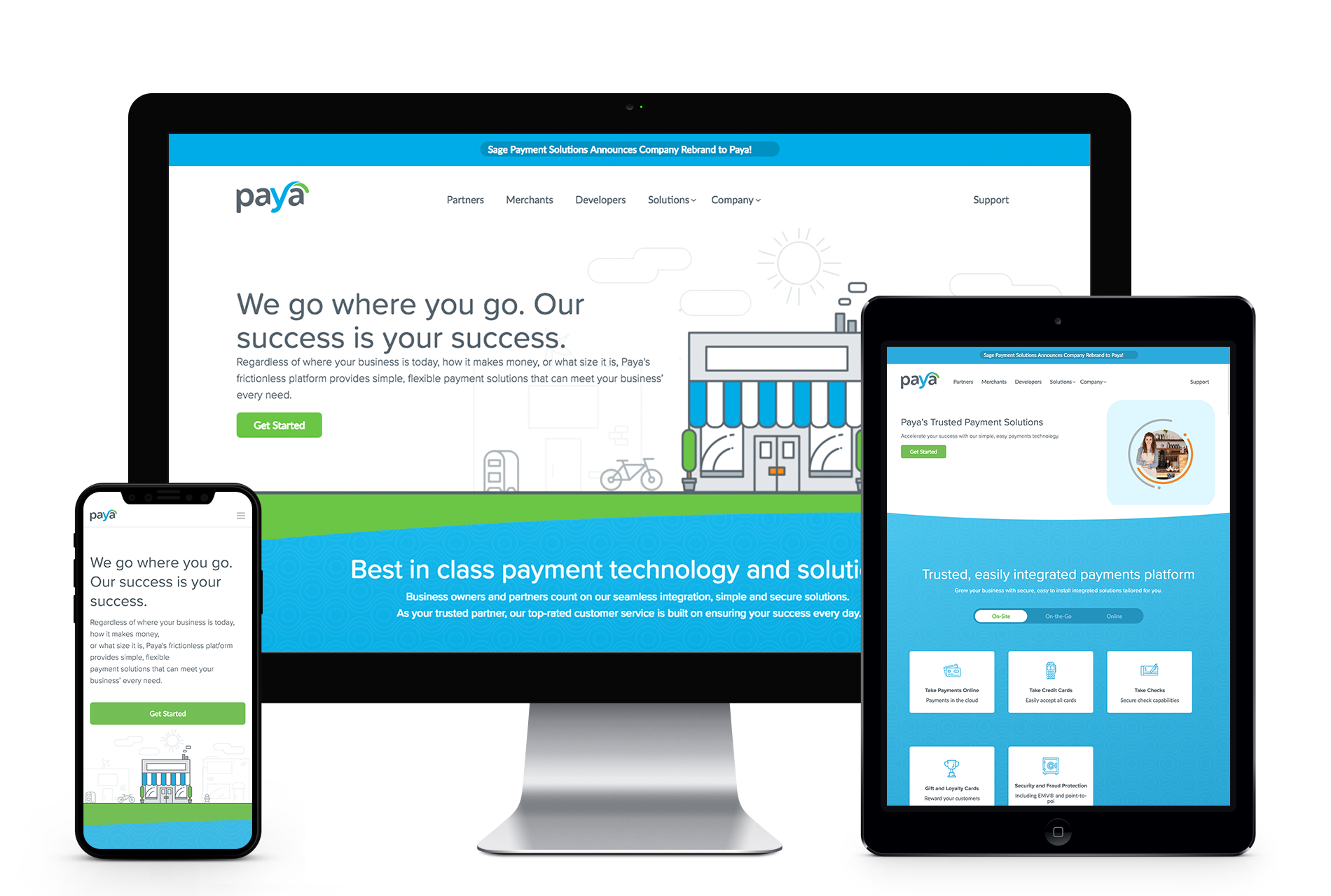
Predictive Analytics provide FinTech companies with a competitive advantage
Still a relatively new arm of data science, predictive analytics studies current and historical data to make predictions about future events, playing a central role in the FinTech space. Predictive analytics is especially relevant in this space because FinTech disruptors focus on developing technology that simplifies our long-term relationship with finance. Wouldn’t finance be a lot simpler if we had tools to predict future behavior?
Predictive analytics comes in handy for FinTech innovators for a variety of reasons, from cybersecurity and identifying employee value-add to customer experience. The ability to monitor and measure customer behavior across platforms allows FinTech innovators to provide the best possible experience for their consumers. Companies are now able to measure purchasing patterns, loyalty, and even feedback to tailor their services individually. This personalization will become even more important as the burden shifts to financial institutions to simplify finance.
As FinTech companies continue to evolve and level the financial playing field, keep an eye on how these three trends will serve key players in the FinTech space. Are you a company in the FinTech space looking to take your brand to the next level? Contact Bluetext.
In our recent blog post, we discussed the power of strategic branding in the world of private equity. As we mentioned, the first step in developing a new brand for an M&A should be to gain understanding and consensus on how you want to be (and can/should be) positioned within the market via your company messaging and positioning. Once you have the words right, it’s time to get the looks down. Your company CVI (corporate visual identity) includes the logo, the color palette, typography, graphics and iconography, unique branded elements like an image masking or pattern overlay, and so much more. As we stated before, you only get to go to market with your new brand once – make sure it counts by following our steps to a successful M&A brand launch below.
3. Define the New Company Structure
When merging multiple companies, it’s important to think through the new structure, from multiple points of view – the employees’ roles, the products/services/capabilities, the customers and partner channels, the company values and culture, just to name a few. Understanding and clearly communicating how everything will fit together will help employees adapt to the change and ultimately help the brand strength. Ideally, you should already be thinking about this during the messaging and positioning phase and should have an idea of what’s overlapping, what’re the new capabilities that need to be accounted for, and write new content for? How do they fit into the company story and how do you market them? How does this affect the website’s sitemap, content, and user journey? How does this affect current and new contracts?

Understanding the company’s new structure and thinking about new processes early on makes it easier to design around the new information architecture, flag problem areas that employees or customers might be confused about, and address them before it becomes a challenge. It’s also beneficial to look ahead – many times during an M&A, companies might be in the process of acquiring another new company/companies towards the end of when they’re launching the new brand. Accounting for that potential while thinking about the new company structure and information architecture encourages a scalable structure knowing that the company’s solutions and capabilities will likely continue to expand throughout the process of building the new brand.
4. Plan Your Internal & External Go-To-Market Campaign
Now that you have strategic messaging and positioning, a new corporate visual identity, and a good understanding of new company architecture, it’s time to start planning the launches – both internal and external go-to-market campaigns.
Employees are brand ambassadors, so set them up for success with a smooth internal launch by setting expectations and communicating in a clear way how this change will affect their roles/responsibilities, the culture/values, etc. Employees are looking to understand what this change means for them. How is their job changing, what’s the new org chart, who do they report to, how do they refer to the brand, etc? A personal touch like a letter or video from the CEO can go a long way in delivering a level of unity and excitement about the upcoming changes. Prep them with swag bags of new branded merchandise, prepare a digital brand assets package with all new branded collateral templates like pitch decks/presentations, datasheets, white papers, business cards/stationery, email signatures, brand guidelines on how to use and apply the new branding, etc. A well synced internal launch promotes confidence about the new company and its opportunities, and the employees are an extension of the brand, so preparing them and motivating them for the changes to come are necessary for the brand to hold strong internally before launching externally. The better you communicate to and prepare employees, the stronger the brand will be represented through them.
A compelling Go-To-Market campaign is essential for an external brand launch. This includes everything from PR and media outreach, to ensuring the website is ready to launch, to a strategic paid social campaign with PPC, hyper-targeted ads, geofencing, marketing automation with email campaigns, optimized SEO, and maybe even a brand launch or brand essence video to really stand out and help tell your story.
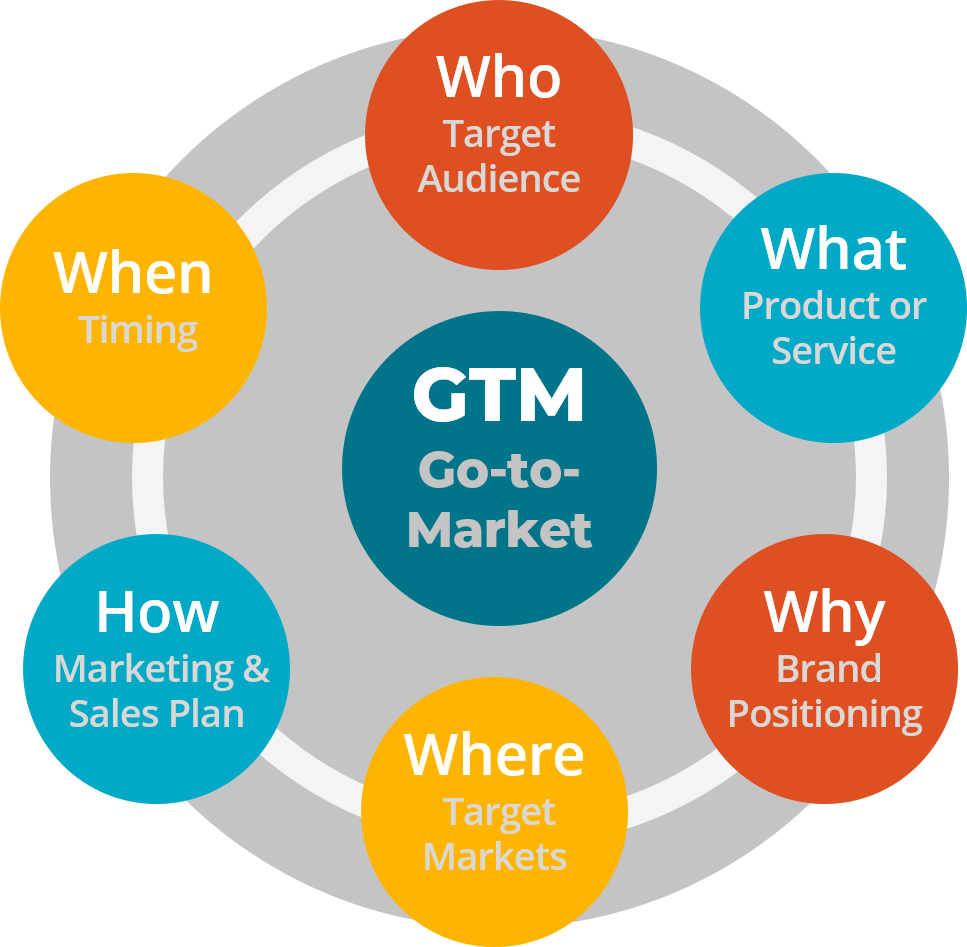
The GTM campaign is where everything comes together – the messaging and positioning weaved in the campaign theme, the compelling visuals representing the new corporate visual identity, and the excitement around the new company’s capabilities and what this means for customers. Executing on a strong go-to-market campaign is not only critical in getting brand awareness, but also in driving home the value of being stronger together – both internally and externally. It’s not about the change; it’s about what’s next, together.
Case Study: SpaceIQ
Enter three leading brands of the workplace management industry: SiQ, Archibus, and Serraview. Each with a rich product portfolio with distinct features, designed for the needs of different sized companies. United, they offer integrated workplace solutions that optimize the workspace and enhance employee experience for companies of any size. Project Union became the name of this powerful merger of three companies into SpaceIQ, a comprehensive solution on a mission to make the workplace good for business and great for people.

To solidify the merger, SpaceIQ needed a new website that spoke to its breadth of offerings and united company mission. The company turned to Bluetext to turn their new branding into a fully responsive and intuitive website to communicate all of their product lines. The new site was designed with the end customer needs top of mind. Using dynamic components to showcase success stories, custom glossary pages, and a robust resource center for all post types, SpaceIQ customers can easily find all the educational resources they need. The three legacy brands’ relevant products are clearly identifiable through the sitemap and component features, but balanced by cohesive branding and streamlined user journey.
5. Keep It All Going
Finally, keep the momentum going, and even ramp it up! The early stages of launching a new brand from multiple companies require a lot of time, energy, and effort to maintain the excitement and continue to push brand awareness. Also from a technical perspective, there are things to consider like not immediately redirecting all legacy websites to the new site since a lot of content, like contract vehicles, for example, needs to still be accessed. However, it should still be obvious that it’s now a new company – so adding homepage banners on legacy sites with the brand launch announcement, or updating logos on the legacy LinkedIn pages (but not removing them), can help make the transition easier for customers until the brand has had time to fully establish itself in the market and stand on its own. SEO is another area that requires some time and love to see improvement since it’s likely a new name and some new search term combinations that google is processing.
A company is only as strong as its talent, so maintaining and recruiting top talent should be a priority. Consider starting a series of video vignettes with current employees speaking about their time at the legacy companies and how it’s been at the new company. Why do they love it, what makes this company different from competitors, how are there more opportunities now, etc.
Along with recruiting campaigns, continuing to execute strategic brand-awareness campaigns via paid and organic social, continuous content writing for SEO and thought leadership, etc. is a long-term game that’s critical in moving from brand awareness into more specialized branded experiences that will resonate even more with the market.
The stronger the M&A brand launch is, the easier it is for PE firms to sell
The most important thing to address in an M&A brand creation is the why (aka, the value prop) behind the new brand and set clear expectations of what this means for employees and ultimately the market. What new, innovative outcomes can we enable? Prove the value proposition of being better together. If you can get the employees and your target audience on board with the new mission, it becomes less about corporate changes and transactions and more about the new opportunities that arise from being part of this new market-dominating company. And when the portfolio companies succeed, the PE firms succeed. For PE firms, having a strong brand itself, as well as a portfolio of strong brands, is crucial for deal sourcing, fundraising, and ultimately achieving higher investment returns.
A brand is often considered a company’s most valuable asset – make sure it’s in the right hands.
If you’re looking for expert strategy and implementation for your next M&A brand launch, you’re at the right place with Bluetext. We know a thing or two about M&As. 40 of our clients have been acquired within 24 months of an engagement with Bluetext. See some examples of our work with these M&As here, and contact us to get started.
PE firms need portfolio companies with strong branding
Private Equity (PE) continues to be the preferred growth financing mechanism for most “for-profit” businesses. According to McKinsey’s 2019 Market Annual Review, “global private equity valuation has grown more than sevenfold since 2002” – more than twice the growth of publicly held equity valuation. While PE fundraising declined in 2020 to the Covid Pandemic, PE markets are experiencing a strong increase in 2021.
PE firms make most of their profits by acquiring companies, helping management increase Enterprise Value through various strategies, and then selling these companies at a much higher value. Value is quantified using metrics such as Earnings (typically EBITDA – Earnings Before Interest Taxes Debt and Amortization), Earnings Multiple (a factor applied to EBITDA to determine Enterprise Value), and valuation of Intellectual Property.
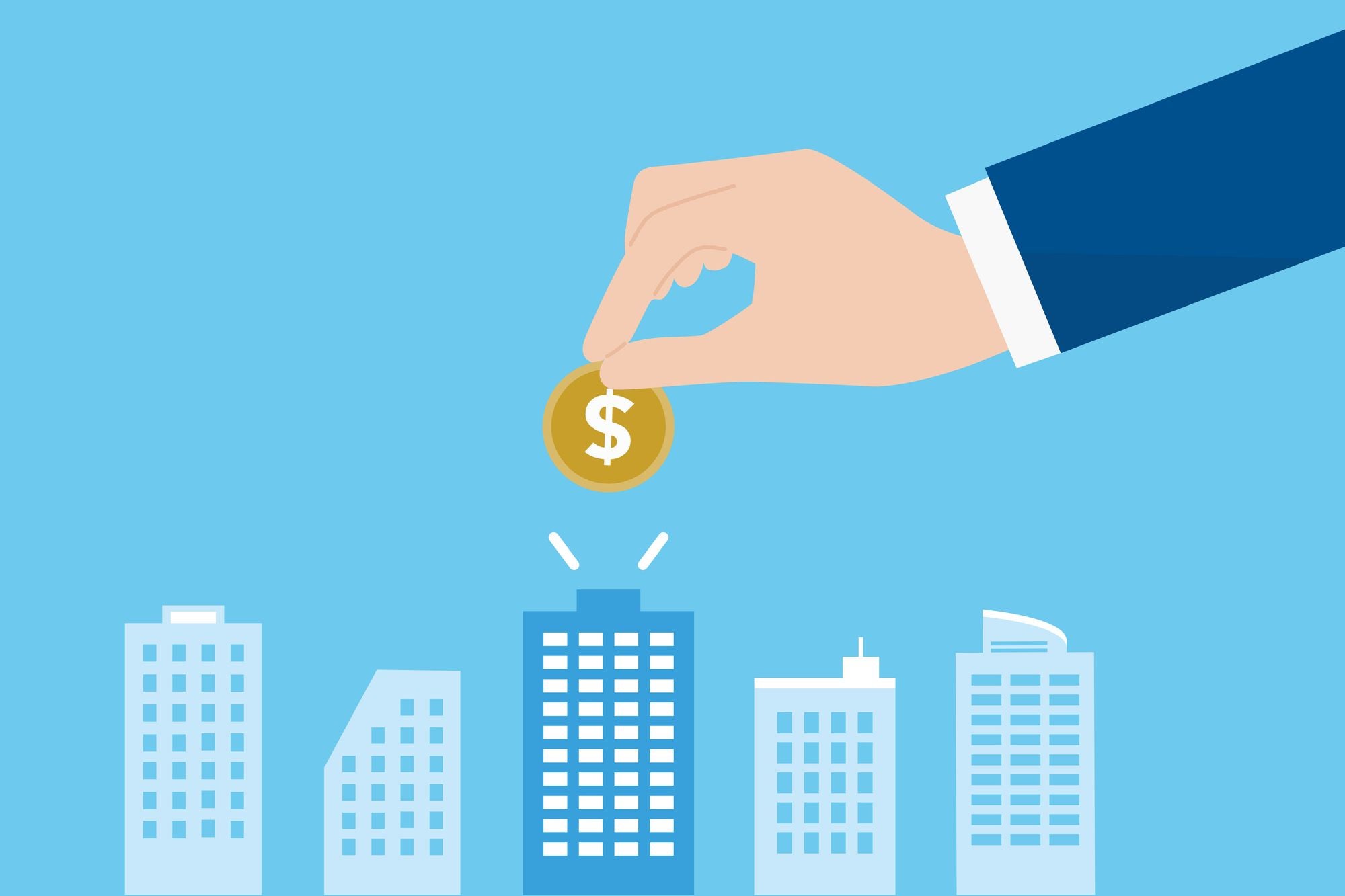
A common and highly effective growth strategy for PE portfolio companies is buying competitive or complementary companies through Mergers and Acquisitions (M&A). The brand is almost always a key component of a) the Earnings Multiple and Intellectual Property Value metrics in the valuation process and b) a successful M&A strategy. Here’s why.
Branding is so much more than a name and a logo; it’s a representation of how your company is perceived – more specifically, how your customers and the market perceive you. It’s a gut reaction, a feeling. This is why it’s critical prior to going through an M&A to create a strategic, memorable, and unique brand that provides a consistent experience across all channels, and makes sense to not just the market, but to all employees, as they become brand ambassadors themselves. PE firms have many tools and metrics to measure the value of a brand (brand loyalty, recognition, and impact) which drive a monetary valuation.

Sloppy, outdated, or inconsistent branding can make employees and the market feel uneasy and unconfident with the new company. A powerful, cohesive brand right from the gate is essential in sending the right message of being “stronger together.” In addition to looking the part, strong brands are more profitable, grow faster, and sell more frequently. You only get to go-to-market with your new brand once – make sure it counts by following our steps to a successful M&A brand launch below.
Our steps to a successful M&A brand launch
1. Develop New Positioning & Messaging
A strong brand is designed to dominate the market, which is why the first step in developing a new brand for an M&A should be to gain understanding and consensus on how you want to be (and can/should be) positioned within the market. You need to understand where you could be within the market as this new company with more talent and more vast capabilities. Determine how all the current brands’ are currently perceived, vs. how you want to be perceived. What are the brands’ value propositions and how will they be combined? If possible, involve your target audience via surveys or workshops to understand how the companies are perceived. That knowledge is a baseline on how all the companies are perceived in the market today and what needs to change in order to be perceived differently and help set expectations.
Once those baselines are understood, you’ll want to define a specific positioning strategy then base your new messaging off of that. With combined capabilities and potentially different focus areas, the positioning strategy likely will shift, so you need to identify how it should shift and define clear and compelling differentiators early on that the positioning and messaging are based on.
Market your new capabilities, but don’t become a generalist. By combining two (or frequently, more) companies together, it’s obvious there’s more diversity and broader capabilities, but if not done the right way, growing this list can make you seem too generic or disjointed. You don’t want to come across as a “jack of all trades”, but rather, a “specialist of many.” This is why considering not just the increased amount of advanced capabilities, but the outcomes of those capabilities and communicating that clearly and effectively in the new messaging is critical.
2. Create New Corporate Visual Identity
This is what most people think of when they hear “brand”. Corporate Visual Identity, CVI, is how a company visually portrays itself to the public. The logo, the color palette, typography, graphics and iconography, unique branded elements like an image masking or pattern overlay, etc. all work together to form the CVI.
Merging a brand portfolio is challenging, and there are several factors to consider before creating a new CVI. If you’re not going in the “house of brands” direction where the parent company is not associated with the products, then you’ll want to develop a unified CVI that is unique in the competitive landscape, is compelling and memorable, and visually represents the story you want to tell from the messaging. Some questions to consider include:
- How do customers/the market connect with each of the brands?
- What is the brand equity of the company or companies in consideration?
- How will you decide which assets, if any, to retain from each brand impact projected revenue?
- What story are we trying to convey and how can we visually portray that?
M&As set many new paths for success, but if the new company’s Corporate Visual Identity is not unified, meaningful, and applied in a cohesive, creative, and consistent manner, it creates a weak brand without solidarity and won’t have the impact it should.
Case Study: BlueHalo
When Arlington Capital Partners acquired several top-performing companies in national security, the AEgis team looked to Bluetext to help merge multiple companies together to create one superior brand, BlueHalo. Bluetext worked closely with AEgis to develop the new name, logo, messaging and positioning, corporate visual identity brand system, website re-design and development, video work, and a go-to-market strategy and launch plan, and in record-breaking time.
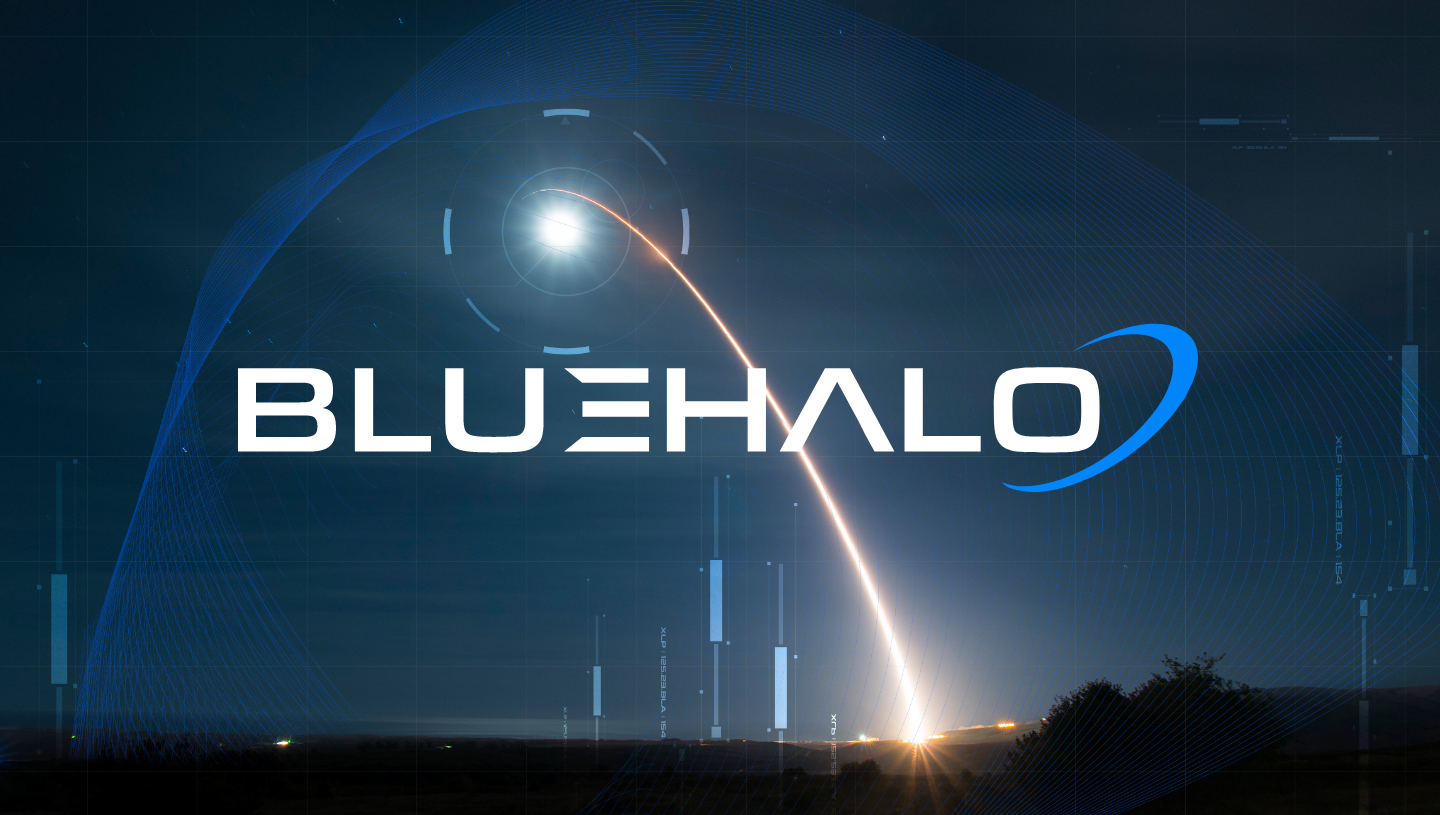
Part of what made the new BlueHalo brand so strong was the powerful corporate visual identity that Bluetext created. Bluetext moved fast to create a bold new name and brand within just weeks that would make a lasting impression on the market. The name BlueHalo represents the unbroken global line that ensures the technical advantage in the most advanced battlespace. The logo embodies the name by featuring a blue swoosh shape that depicts in a clean but strong manner, a halo of protection.
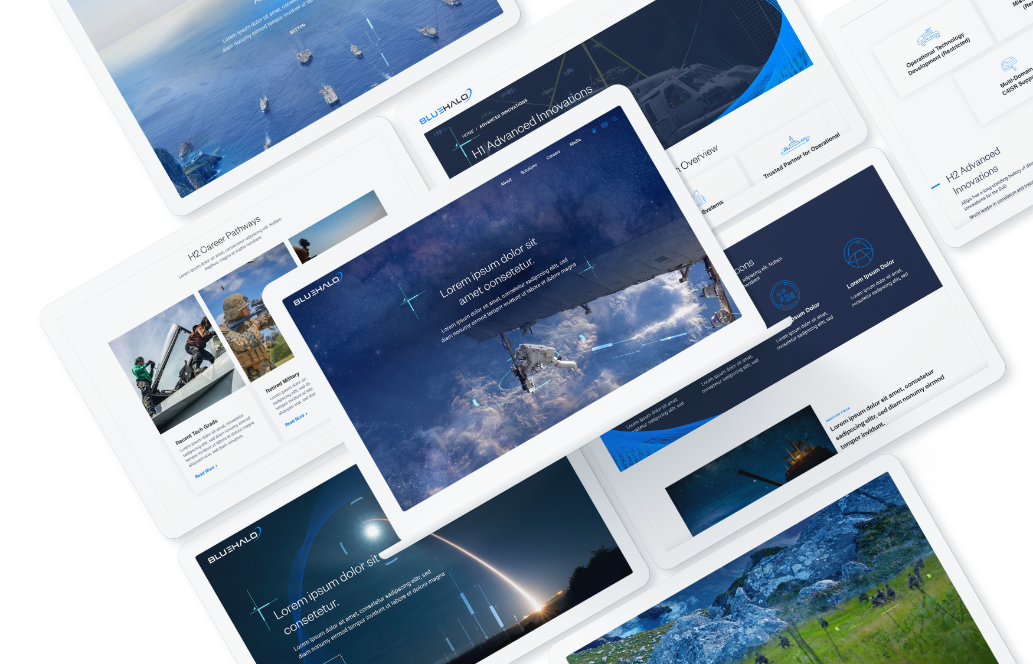
The striking blue colors to accompany the name, the branded engineering vector graphics woven in the photos to create unique, branded imagery, and the blue wires to form shapes that pull from the halo in the logo all work together to create a cohesive, meaningful, and regal brand system.
To learn more about strategic branding and how M&As can succeed with it, check out part 2 of this blog. To learn more about Bluetext and our services, contact us today.
Where is the next great opportunity for your business? Well, government agencies for one. According to USAspending.gov, approximately five trillion dollars is being allocated to government agencies in Fiscal Year 2021, with over $1 trillion going to Health and Human Services alone. These agencies are growing, and their needs for hardware, software, and services are increasing along with them.
If you are already marketing to “the government,” you understand that winning government contracts is a long sales cycle. The opportunity-to-award process might be 90 days on average, but the lead-up to those 90 days is a critical period where the deal is won or lost. During those 90 days, all data gathering and relationship-building you have done over the previous 2-5 years comes to fruition. So what exactly sets the winning businesses apart? Memorability. Government contracting is a long game, built on endurance. After many years of B2G marketing experience, Bluetext is here to break down what gets your foot in the door and sustains success in business to government marketing.

Division of time between positioning your company for success with government agencies and bidding on specific contract awards.
Winning government contracts is not as simple as pointing your existing sales and marketing engine at a new target. “The government” is not a monolithic entity, and even “the agency” needs to be treated with more nuance: It is composed of dozens of sub-entities that make independent decisions based on independent decision criteria. In enterprise sales, winning over a single decision-maker can often close the deal. In government contracts, groups of stakeholders across the agency influence which business wins the contract, even if a single decision-maker completes the signs off. So instead of persuading a single stakeholder, B2G companies are tasked with winning over multiple groups, at multiple different stages and occasions. Hence, why brand endurance is critical.
Complicating matters further, traditional channels for establishing relationships with government agencies have been disrupted by the pandemic. Most in-person conferences and meetings will not occur this year, and some will remain online for the foreseeable future. Government stakeholders are more geographically distributed and digitally dependent than ever.

The tides have shifted. Once an industry that operated in an isolated silo of its own rules, businesses seeking government contracts must adopt new, digital marketing initiatives to effectively position themselves.B2G companies should leverage the data-driven, digital marketing tools developed for B2C companies to segment and personalize their approach to agency stakeholders. B2G is too broad a term, and even business-to-agency (B2A) abstracts away from the customer understanding your company needs to have to win contracts consistently. A business-to-stakeholder (B2S) marketing approach is what your company needs to win consistently.
To succeed in data-driven B2S marketing, we explore:
- What success looks like in B2S
- The lifecycle of data-driven stakeholder cultivation
- The division of labor between internal departments for successful execution of that lifecycle.
Begin with the End Goal in Mind
Before we determine how to develop our marketing and sales pipeline, we need to define success. Agency leadership and stakeholders can frequently change, at a minimum, with every new government administration.
Therefore, we prioritize targets that will allow your company to evolve as agency priorities and decision-makers change. Your company must first make its impression as a strong, reputable industry player, whilst also remaining top of mind through consistent brand recognition and relevant thought leadership content. These are the characteristics of a successful B2A marketing approach:
- Your company is considered a thought leader in the space where the agency is procuring products and services.
- Government agency stakeholders regularly call your company to ask your opinion on upcoming agency initiatives, product and service specifications, RFPs, and contract awards. Occasionally, you are invited to co-craft the RFP in ways that position your company to win.
- You are aware of the potential for shifting priorities months before those shifts occur.
- Information on the priorities and interests of your agency stakeholders is filtering directly to your sales team, who pass relevant information to content creators, who are crafting bespoke campaigns that reach your contacts as related conversations occur internally at the agencies.
- Business development staff follow up on that content with meaningful conversations with key stakeholders. Those conversations assure your agency contacts that your company is focused on their individual and organizational priorities.
- You have both breadth and depth of relationships at the agency: deep relationships with key stakeholders and associations across the organization. A few people leaving the agency does not impact your company’s ability to retain the status and relationships described above.
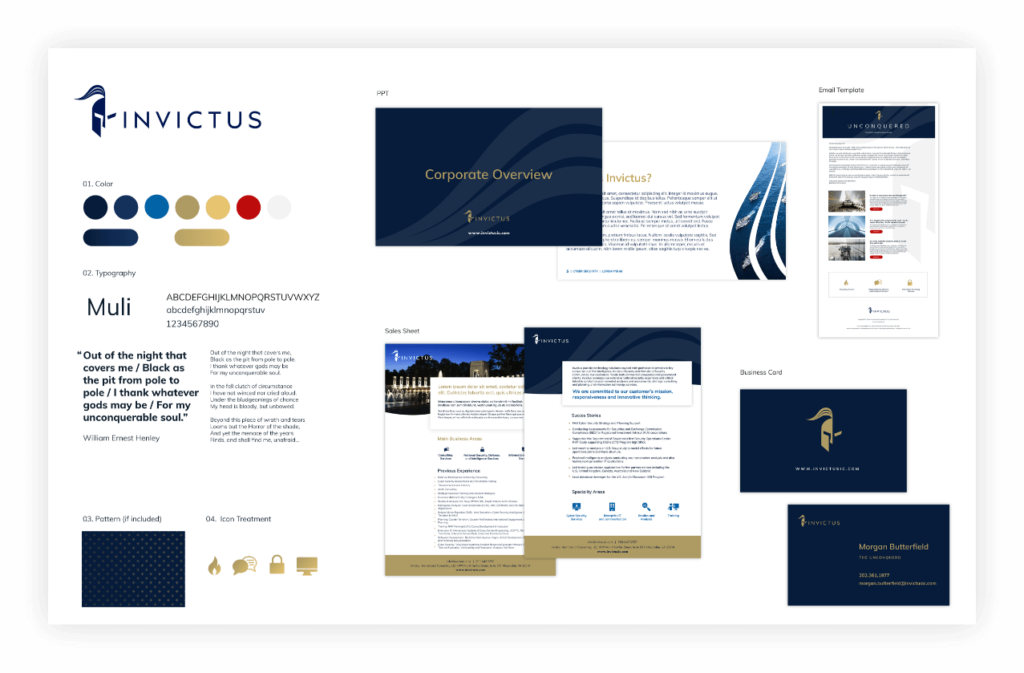
Does your content dress the part? A sure sign of a reputable industry player is professionally branded collateral assets, such as Invictus
The Stakeholder Development Lifecycle
In order to accomplish those goals, start by treating the agency as a combination of individual stakeholders and stakeholder groups. Organize your company’s sales and marketing approach around the Stakeholder Development Lifecycle for B2A marketing, which includes:
- Acquiring Stakeholder Contacts: Start with breadth. In order for your company to establish deep relationships in an agency, you need to acquire as many points of contact as possible. Target ads based on geolocation to get in front of as many relevant stakeholders as possible. Get their title, contact information, and social media presence. Build from there.
- Monitoring Stakeholder Contacts: Capture social media posts, digital content interaction (with a privacy-first approach of course), conference attendance, and internal agency relationship information from contacts over time so that you can understand and target their needs, interests, and priorities.
- Segmenting Stakeholder Contacts: Based on a contact’s position in the organization and their activities and expressed perspectives, segment them into groups that should be targeted and messaged together consistently.
- Nurturing Stakeholder Contacts: Develop marketing, business development, and sales outreach that messages contacts according to their segment and the depth of their relationship with your company. Build a customer journey map that helps you identify what messages move contacts deeper into understanding your company’s value proposition and believing in it.
- Fostering Stakeholder Promoters: Identify your company’s highest value and strongest promoting contacts as the champions your company needs to win individual contract awards. Prioritize according to how naturally the contact aligns with your company’s offerings and how important the contact is to your company’s long-term relationship with the agency.
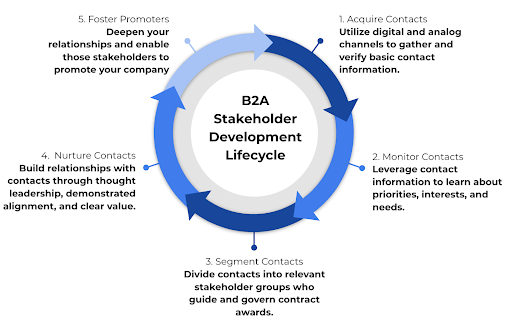
Stakeholder Development Lifecycle for B2A Marketing
Considering Stakeholder Segments
Within each agency, there are groups of stakeholders with priorities that will govern how well your company competes in a given contract award. The priorities of the agency can be efficiently stored within a single person’s head. But understanding the priorities of each stakeholder within each stakeholder group requires a data acquisition and data management approach that efficiently captures, aggregates, and generates insights about how your company is positioned with regard to that stakeholder group and the awards they oversee.
To understand how stakeholder priorities can differ, we use an example company, CyberSample, selling cybersecurity solutions to the Department of Transportation (DoT).
If CyberSample were to interface only with the DoT’s contract oversight and contract administration team, they would get a simplified and sanitized understanding of what governs the contract award. They would miss the critical details and priorities needed to assuage the concerns of each stakeholder group.
If they were to interface only with agency leadership or technology leadership, they would get a sense of broad organizational priorities and gain credibility from being introduced by internal power brokers. However, unless they leverage those introductions to dig deeper into specific needs surrounding an award, CyberSample’s team is unlikely to understand the tactical needs of technology implementers, users, or initiative leaders.
Example stakeholder groups and their corresponding priorities for CyberSample are provided in the figure below.

CyberSample stakeholder segments and their priorities. Segments and priorities should be validated by marketing interactions, public discussions, and business development and sales conversations.
Within each agency and with regard to each industry vertical selling into the agency, there will be a different set of stakeholder groups that influence decision-making. Your first task is to gather the intelligence needed to identify, segment, and target each stakeholder group. Taking a card from the B2C marketing playbook, it’s very similar to traditional customer personas, focus groups, data collection and tracking. Businesses that open their minds to alternative digital marketing and outreach methods are putting themselves miles ahead of the competition. This will allow you to move from a broad B2A approach to a more focused B2S methodology.
Executing on B2S Marketing with a Data-Driven Approach
For the approach described above to be successfully executed, each of your internal departments needs to coordinate. That coordination is built on a shared understanding of the agency landscape. A shared understanding requires a consistent and comprehensive approach to data collection, manipulation, and utilization.
Within the Contact Acquisition phase, your company’s Marketing and Content teams need to develop top-of-the-funnel landing pages, emails, webinars, white papers, and presentations that make agency contacts want to opt-in to a relationship with your company. Your Technology team needs to have the systems in place to capture customer interactions from your web properties and events, as well as to trigger intelligent outreach based on those interactions. Your Data team needs to clean and integrate the information captured from these interactions so that intelligence can filter back to Marketing, Content, Business Development, and Sales.
A summary of your company’s information needs is provided in the table below.
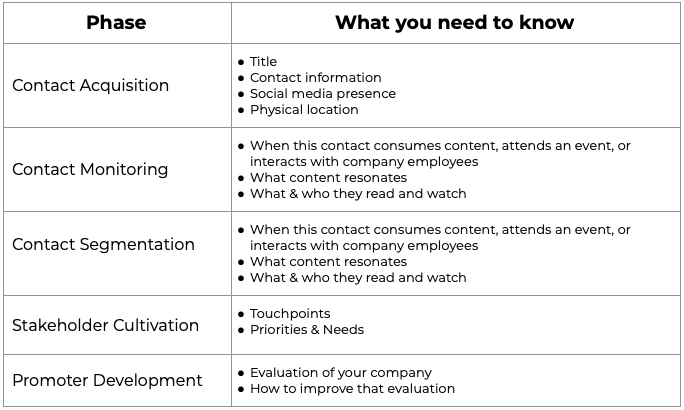
Once your company has acquired contacts and is actively monitoring activity, your Marketing, Content, and Business Development teams need to know what messages are resonating with agency stakeholders, and who are credible thought leaders through which to filter those messages. That provides the platform for new content development and for influencer marketing via the people who already have your stakeholders’ attention.
Those messages also enable the Business Development team to schedule meetings and start having conversations with stakeholders about their individual priorities and the interaction between those priorities and the organization at large. Your company can surface conflicts between agency groups to discover how to navigate potential barriers to contract awards.
Meanwhile, your Marketing team can deepen relationships with agency stakeholders through increasingly targeted messaging that moves those stakeholders closer to being promoters of your business. Your Product & Service team can ensure that your product or service value proposition is aligned with the priorities of each stakeholder group as you enter the RFP process. Your Business Development and Sales teams can focus on the individual needs of key stakeholders and customize your messaging to those stakeholders’ needs.
It is the job of your Data team to ensure that each department has the intelligence they need, when and where they need it, to effectively cultivate those relationships and respond with well-honed sales and marketing messages.
Below, we illustrate the division of labor between different departments throughout the Stakeholder Development Lifecycle.
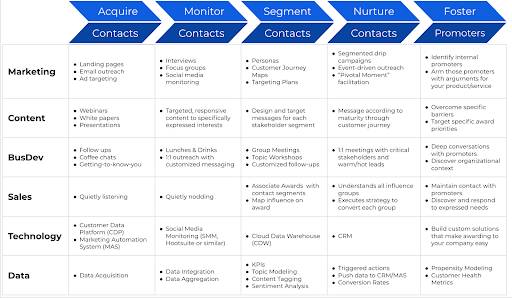
Division of Labor Between Departments for the Stakeholder Development Lifecycle
With an improved strategic approach to B2A marketing, focusing directly on the stakeholders, and a commitment to building the infrastructure and processes to gather and interpret data about them, your company will be better positioned to win government contracts for many years to come.
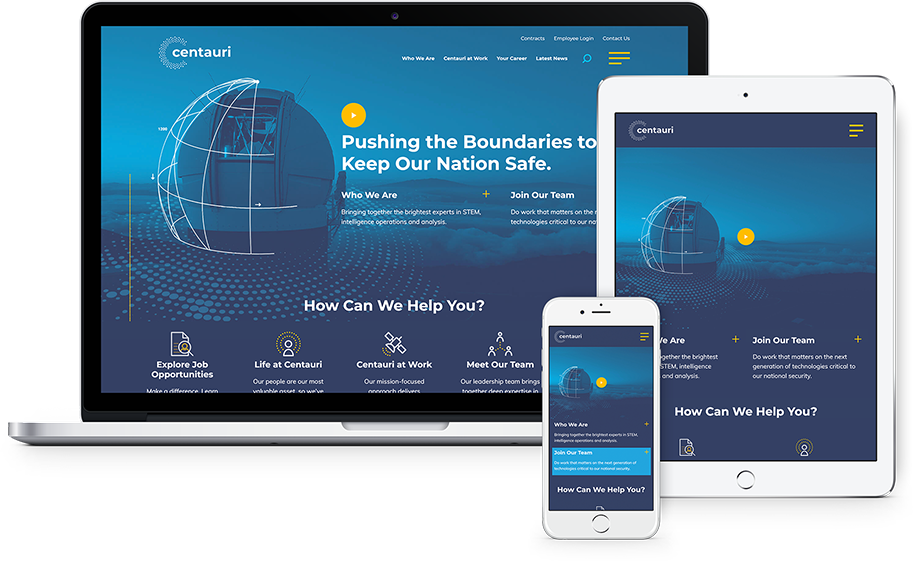
Centauri utilized Bluetext’s services to launch a new name, brand, and website following a merger. Their go-to-market strategy succeeded in winning new awards, company recruits, and even an acquisition from KBR. Check out how Bluetext has set up more brands for M&A success.
How Do I Get Started?
For the approach described above to be successfully executed, each of your internal departments needs to coordinate. That coordination is built on a shared understanding of the landscape within the agency. A shared understanding requires a consistent and comprehensive approach to data collection, manipulation, and utilization.
The starting point depends on the maturity of your company, specifically in the Data and Marketing Teams. For those with fully staffed teams that can execute, you can follow the plan outlined in this post.
The Data Team holds responsibility for timely, reliable access to data to allow the MarCom Team to execute and your other teams to act on the results. If you are still attempting to develop the overall strategy and buy-in from departmental or executive leadership, or if you don’t have the confidence in the systems in place, Bluetext has several options to help you move forward:
- Data Summit: This workshop is customized to your specific requirements, but is designed to bring together stakeholders from the relevant departments to educate them on the goals of the initiative, gather input from various departments about any concerns or limitations, and move toward a consensus regarding the strategic approach that will improve your targeted marketing efforts.
- Data & Systems Assessment: For those who have made the decision to move forward with improved data-driven marketing, it is critical to have confidence in your data systems (reliability, scalability, and accessibility), data governance (security and policies), and ROI (time to value and budget). Our assessment process addresses all of these aspects and culminates with the development and delivery of a Data Infrastructure and Capabilities Roadmap (DICR). The DICR includes the findings of the assessment, strategic vision, proposed infrastructure solution, and an implementation plan (typically phased).
With the organizational buy-in in place, and you have the data and reliable systems in place, but require assistance in execution in the marketing and content, working with industry-leading partners like Bluetext will allow you to start executing your strategy.
Bluetext brings the marketing and business development expertise needed to elevate your targeting and messaging and brings the data expertise needed to make your web, marketing, sales, and business development data work for you. Reach out to start the conversation about how we can position your company to succeed with government agency marketing and business development.
